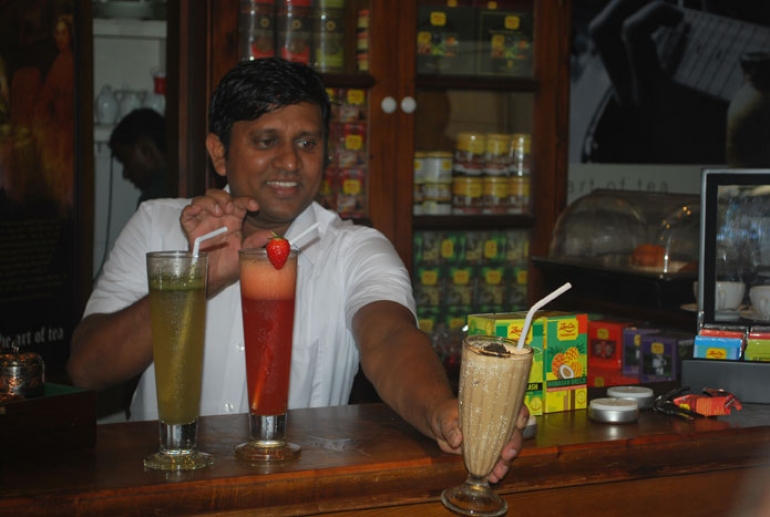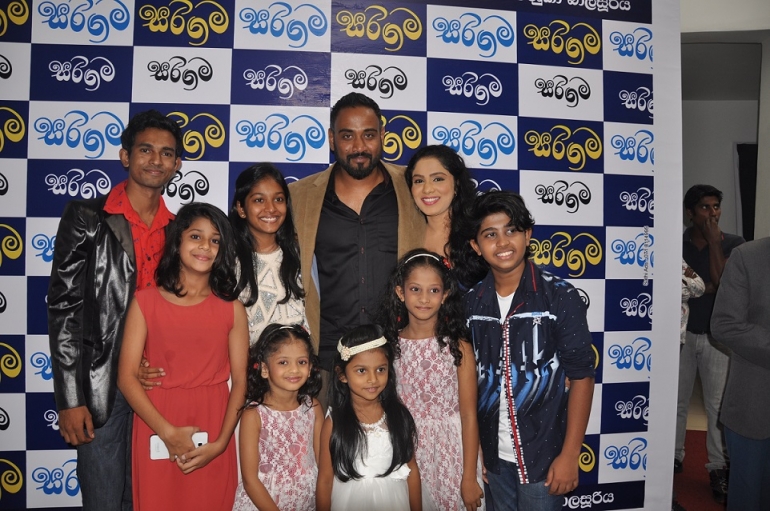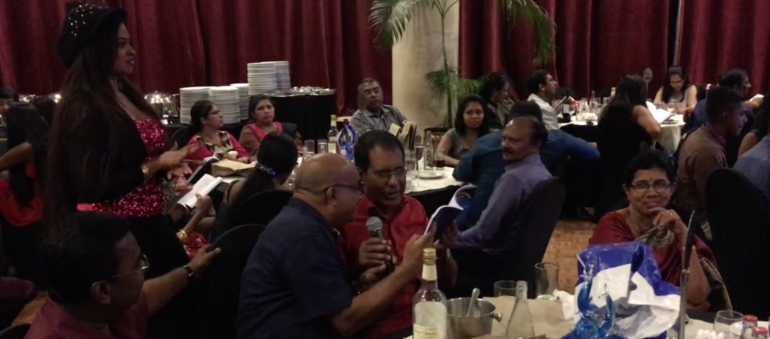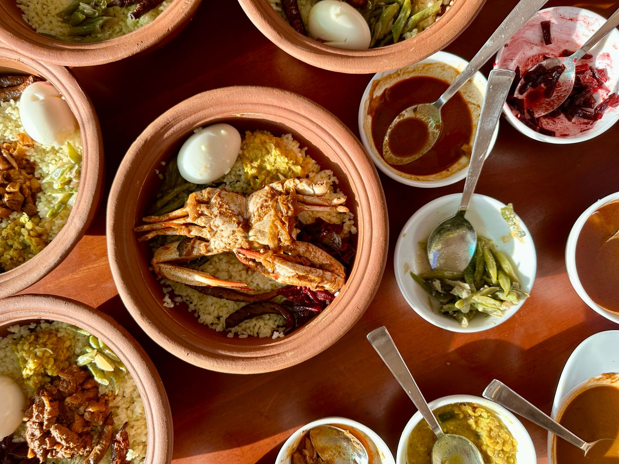The Christmas season is a time for traditions, especially when it comes to food. These traditions which one could say are mainly of Western origin has through the years taken its own twists and turns, especially here in Sri Lanka, and more so in recent times.
A generation ago, every home developed its own particular delicacy when it came to this particular festive season. Every mother had her own formula for Christmas cake handed down to her from her mother, grandmother or great grandmother. How long the cake should be baked, what fruits went into it, how the ingredients had to be cut and even where the ingredients should be bought from were all planned according to tradition and what was done in years past.
But in today’s commercial world, we tend to rely more on the various bakers and confectioners to give us those very delicacies ready made. This Christmas, I was quite surprised by a particular variety of Christmas cake given to me by a neighbour. The cake had a distinct flavour coming through which I had not experienced before. After eating this excellent and moist cake, which was not wrapped, I could not help but ask her (my neighbour), what the secret was!
She told me that it was her grandmother’s recipe, and the secret was homemade pineapple jam – now who would think of that? Local fruit in Christmas cake and pineapple at that but what it shows is how local cuisine has developed over the years. Mrs Fernando, my neighbour went on to tell me about various Christmas delicacies from the good old days which were handed down from mother to daughter and continued, and some of these recipes were actually mind blowing.
One interesting recipe was using the same dry fruits used in a Christmas cake into a Sri Lankan delicacy named ‘Bibikkan’. To those who don’t know what Bibikkan is (sadly), it is a jaggery and coconut based cake with lots of local spices in it. But it seems that there is a recipe to combine this very local delicacy into something more continental, Sri Lankan style by making it into a Christmas Bibikkan cake.
Most of us have heard of milk wine, which is drunk during this season, but my neighbour tells me that of a special formula that is ‘Lovi’ (a local sour tasting fruit) wine, which is a familiar tradition in her family. Sadly, in most cases these family recipes are vanishing into the mists of yester year with traditions being taken over by the McDonald-ised world we live in, which is fitting our taste buds into a fast food formula.
If one asks me whether Sri Lanka has a vibrant cuisine culture in comparison with our neighbour India, I would without hesitation say ‘no’. One could argue that it is the mere size of India as opposed to Sri Lanka that has caused India to have such a diverse food culture.
But one could argue to the contrary, as Sri Lanka is a land which has come under a lot of foreign influence, not only the colonisers but through the centuries there have been many visitors who have influenced our cuisine. The hoppers and string hoppers, which are known as traditionally Sri Lankan, are not really endemic.
However, why Sri Lanka has such a limited scope in its food culture could be seen, for one as the very ingredients we use such as our condiments have become very standardised as we depend on about five or six brands to add flavour to our curries. In the past, each household had its own formula for their masalas, which made the curries of each home taste different.
For that matter, for over 150 years, we have been the producers of the finest tea in the world. The ‘Pure Ceylon Tea’ brand is the most popular amongst drinkers in most parts of the world be it Russia, the Middle East or the United Kingdom.
They consume different varieties of our tea, produced from different elevations of our country and treated in different ways although we ourselves here in Sri Lanka, are stuck with drinking just two varieties i.e. a low grade tea dust and a BOP which is drunk as either plain or milk tea.
What a shame, one would say, for not developing a taste for different flavours of our tea, and the question is – is it something endemic? Have we put ourselves in a straight jacket when it comes to choice in this area? But leaving aside developing a palate for the sake of taste itself, there is a huge marketing and promotional reason behind the lack of diversity we seek in our cuisine.
In Sri Lankan tourism itself, we boast of the diversity, which we can experience within just a few hours whether it is climatic, cultural or even ethnic. But when it comes to Sri Lankan food or drink, we seem to be a little stumped.
In order to change that, Sri Lankans need to look at that diversity as a way of life. That is why when the Sunshine Group, the holding company of Watawala Plantations, had a recent event to promote the unique diversity of Sri Lankan tea, it was a welcome start. At an event held at the ‘Tea Cup’ their specialty tea restaurant, Dushie Ratnasinham, Director of Watawala Plantations said, “Tea is the drink that gives us homely comfort, makes us feel our ‘Sri Lankanness’. But, we do not have a ‘tea culture’ where two people meet over a cup of tea at a cafe. This is an area Sri Lankan entrepreneurs need to focus more on.
“Like coffee shops that have mushroomed in every nook and corner of our capital city, we need teashops and tea cafes, that will take our essentially tea drinking nation back to its ‘tea’. The idea of promoting Ceylon tea goes hand in hand with the concept of creating a strong ‘tea culture’ in Sri Lanka. We are not a coffee drinking nation. We are a tea drinking nation. Instead of promoting coffee or beer, why don’t we promote our flagship brand of ‘tea’ at our nation’s cafes and restaurants?”
But what was started by this company needs to be followed on and taken seriously. It is not that we don’t have a smattering of specialty tea boutiques here and there in the city, or entrepreneurs experimenting with Sri Lankan food such as Koluu’s, Harpo’s, Barefoot, the Gallery Café or even the ‘Tea Cup’ which offers an interesting array of ‘tea shakes’ to replace milkshakes.
But the need of the hour is for this to be pushed on a macro level, i.e. more from a national point of view, with the involvement of our tourism and cultural ministries. Local hotel schools should be experimenting with uniquely Sri Lankan recipes.
Recently I saw the promotion of an interesting local cocktail to replace the West’s ‘Long Island Iced Tea’ at the Dutch Hospital’s Ministry of Crab. Called the ‘Small Island Iced Tea’, this drink is an iced tea soda with an arrack base; and the restaurant has to be credited for offering this pleasantly refreshing local diversity.
It is not that we don’t have the formula or creativity. It is simply that there is a lack of initiative to widen our scope in this area. It is not enough for just one company or a handful of restaurants or individualsto take on this very macro idea; or for brands to be looking inward when creating diversity for commercial reasons only. If we are to move forward in creating brand Sri Lanka and positioning it, everyone needs to be in on it. It is only then that we can create an experience, which would be unique to our small island.
(The writer, a PR consultant and head of Media360, was previously a mainstream journalist in print and electronic media. He also edits a new media website.)
Daily FT
Link: http://www.ft.lk/columns/the-small-island-formula/4-128738














